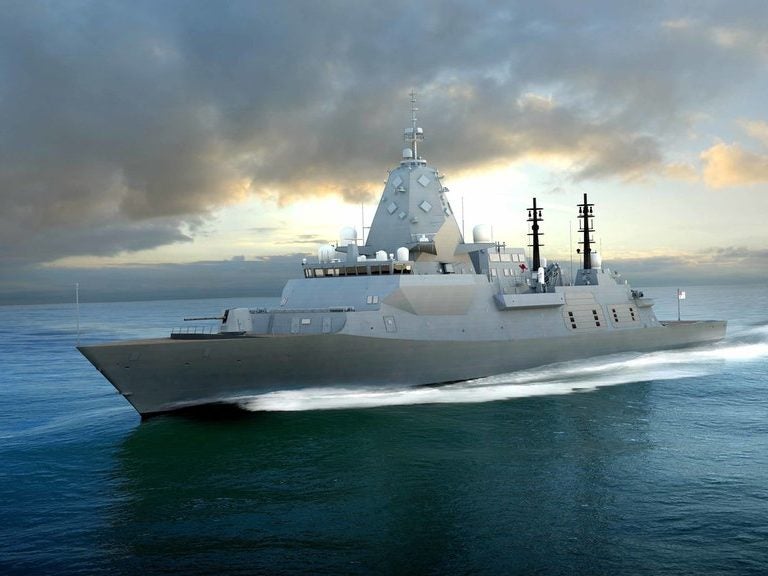
What does the warship of the future look like? Is it armed with stealth technology, advanced radar, railguns and lasers? Or, as Dstl thinks, built on connectivity, artificial intelligence (AI) and machine learning?
To help this future warship take shape, Dstl is offering £1m for innovative proposals to a slew of challenges, and a potential £3m of funding further down the line.
“It is essential that defence embraces the potential of intelligent systems, approaches and technology,” Dstl said when announcing the competition. This idea forms the core of the Royal Navy’s modernisation push and is echoed in the list of challenges that Dstl want to solve.
RUSI sea power research fellow Dr Sidharth Kaushal says Dstl’s data push is necessary as navies across the world change their tactics, adding: “The broader shift you’re looking at – and this is not just the Royal Navy – is a shift from few, exquisite platforms to many and cheaper ones, where your larger platforms now act as motherships.”
For a combat theatre in which unmanned and manned vessels work together, larger ships such as the Type 26 or Type 31 will need to process immense amounts of data from a vast assortment of sources, allowing the ship and crew to react to threats and redirect resources accurately and effectively.
A Dstl spokesperson told us: “Intelligent techniques and automation will have a significant impact across all aspects of defence. To address this, Dstl is proud to be working on Intelligent Ship – the Next Generation. This project embraces the potential of intelligent technology, data and big data exploitation to address these challenges; equipping the Royal Navy and wider defence for 2040 and beyond.”
The challenge at hand
The first challenge in Dstl’s competition is ‘mission planning and decision aides’ or, simply put, how can we allow sailors to make better decisions faster?
Dstl wants systems to pull in a plethora of data streams from ship sensors, government information, and open-source data to contextualise everything a decision-maker needs to know. With more data, the correct decision will be made more often. This ties in heavily with Dstl’s second challenge, ‘information fusion’ which means pulling multiple data points into a comprehensible stream.
This open-source data, says Kaushal, will also ensure the continued supply of information to the Royal Navy.
“Open-source data is going to become a big part of tactical planning, with or without AI,” he says. “If you look at satellite constellations, some of the biggest ones that are expected to exist in the future will be owned by private sector companies like Black Sky. Military infrastructure may well come under attack, your satellites may come under attack, or your computer systems may be cyber denied. Relying on open-source data will be absolutely critical.”
As Russia, China and the US are working on similar projects to integrate AI and open-source data into their military operations, the logic holds that if everyone has access to open data, no one will want to target the source.
Creating balance between system and sailor
Another challenge the MOD wants solved is ‘sensor and information management’. Expanding on this, Dstl is seeking ideas for automation to pool data and resources, allowing different systems to fill in the blanks left by others.
Essential, too, is the ability for people to interpret what these sources reveal. This is where the concept of ‘novel human-machine interfaces’ comes in. Data is only useful if humans can interpret it, which is why Dstl wants all of the data collected by various systems to be presented in a way that is easy to digest and act on.
The final criteria of the competition are ‘human-machine teaming’ and ‘integration’, both aimed at ensuring that anything developed through the competition will be functional and easy to apply.
Human-machine interfacing is another critical issue, which Kaushal says must be marked with a “clear division of labour”. The system becomes redundant if the human operator second-guesses it, therefore both person and machine must have clear limits to work cooperatively.
“Humans tend to excel at holistic reasoning, the ability to tie in multiple concerns from multiple demands, like ethics, strategy, or the overarching political objective, whereas machines tend to be excellent at linear computation,” Kaushal explains. “The role of the human in this context would be very much to set the parameters of engagement, [the] rules about what can and can’t be done.” The computer can then do the rest.
Keeping up with the cultural shift
When it comes to technology and modernisation the Royal Navy is not short of money, but finding the right amount of talent to navigate the navy through this modernisation process may become a challenge.
As Kaushal notes, “the early adopters of technology are often not those who do particularly well in getting the most out of them”. Much of cutting-edge innovation in areas such as AI is currently happening in the private sector, which is also doing better in attracting the kind of talent that will be needed to further develop the technology.
When people can earn upwards of £250,000 a year developing AI in the private sector, with benefits and flexible hours, a career doing the same thing in the military may not seem that attractive in comparison. This means one of the challenges for navies across the world will be how to attract the next generation of talent that will help them navigate the digital transformation.
With modernisation efforts in full swing, it’s clear that the way the Royal Navy works is in for a shake-up. Going far beyond developing the technology, this modernisation drive will also affect its tactics, intelligence, staffing and future operations.



